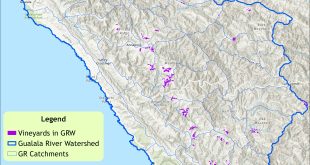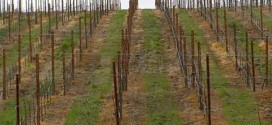Artesa Vineyards and Winery recently created a new website, ArtesaSonoma.com. At the top of their new Home page, they say,
“Several recent articles were published in newspapers throughout the United States that contained a number of inaccuracies including stating that Artesa Vineyards and Winery intended to clear cut old-growth redwood trees and that development of our Annapolis property would interfere with fragile fisheries.”
We have reviewed many newspaper articles on the topic of Artesa’s Annapolis deforestation project, and we can’t find a single one which mentions “clear-cutting old-growth redwood trees.”
See for yourself – here are links to news articles:
- Plan to cut forest for vineyards faces opposition – AP
- Redwoods versus red wine – LA Times
- Water Use by Vineyards Is Challenged – NY Times
- Into the Woods – North Bay Biz
- Fall of the Redwood Empire – North Bay Bohemian
- Artesa’s controversial timber-to-vineyard plan nears approval – PD
- Sonoma Co. freezes hillside vineyard conversions – PD
- Moratorium would block some proposed Sonoma County vineyards – PD
- Forest lands eyed for vineyards – PD
- Vintage Capital – FA
- May We Suggest a Pinot With That Redwood Forest? – HuffPo
- People Who Belong To The Land – AVA
- Destroying The Beauty Of Our Place – AVA
- Mendonoma Coast’s Second Spanish Invasion – AVA
Can’t see the forest for the trees?
Friends of the Gualala River has never suggested that Artesa is planning to “clear-cut old-growth redwood trees” – because we live here, and we know that the forest on Artesa’s property is second growth (except for very few relict old growth trees). We are opposed to their plan to clear-cut second growth redwood forest.
Q: What’s the difference between trees and a forest?
A: An entire ecosystem. A forest is not valuable only for its individual trees, but for the hundreds of species that live in a forest. Forests provide habitat, as well as clean air and clean water. Forest canopy slows the rain drops and the roots hold the soil, which keeps sediment out of the streams and provides cold clear water for fish (including endangered steelhead) as well as for humans. They also sequester carbon, which is important in today’s changing climate.
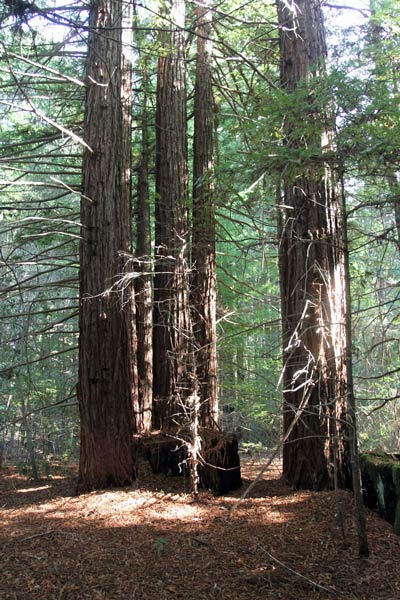
Redwood forest on the Artesa property in Annapolis, CA
A dangerous argument
Q: Are redwoods only worth protecting if they’re old growth?
A: No! Second growth redwood forest provides critical habitat for many species and other valuable services.
In their Final EIR, Artesa argues repeatedly that their land in Annapolis has been damaged by past human activity, and therefore isn’t special or worthy of protection. That’s why they want to assure us that they’re not clear-cutting old growth, because they understand that would be bad. But, they argue, their land is not old growth – it’s already been cut, so it’s no longer special, and not worth protecting – so it’s okay to clear-cut the second growth forest.
That’s a very dangerous argument. Unfortunately, that argument is being made frequently these days, and it applies to the entire planet. The earth has been severely damaged by human activity. Does that mean that it’s no longer special, no longer worthy of protection?
Nature has tremendous regenerative power. If we stop the destructive activity, nature immediately begins to heal itself. We don’t need big “restoration” projects in our watershed, we just need to let nature heal. The more damaged an ecosystem is, the less regenerative capability remains. A second growth redwood forest (i.e., that has only been clear-cut once) has been damaged, but still maintains significant biological diversity, and begins to recover immediately.
 Environmentalists,… acknowledge the years of logging but talk of the forest as recovering and a lively source of habitat. “The wildlife is phenomenal,” says Barbara Scalabrini, whose Annapolis Winery overlooks what seems to be a lush, redwood-covered area near the proposed development. Environmentalists,… acknowledge the years of logging but talk of the forest as recovering and a lively source of habitat. “The wildlife is phenomenal,” says Barbara Scalabrini, whose Annapolis Winery overlooks what seems to be a lush, redwood-covered area near the proposed development.  “…we have foxes, bobcats, lynx, mountain lions, wild hogs, bear, bald eagles, golden eagles and falcons,” she says. “…we have foxes, bobcats, lynx, mountain lions, wild hogs, bear, bald eagles, golden eagles and falcons,” she says.
Water Use by Vineyards Is Challenged – NY Times |
As the rate of logging has slowed, the Gualala River watershed has started to recover. If we can stop the most damaging human activites (Artesa’s proposed 154 acre clear-cut, for example), the watershed will gradually recover.
If we keep allowing the damage to occur, the Gualala River watershed and its great coastal redwood forest will eventually become too fragmented, too severely damaged, and will no longer be able to recover. The salmonids will become extinct, and the forest will become simply groups of trees providing a pretty view from the vineyards, wineries and their mansions.
It’s true that 50 to 75 years is relatively young for redwoods, but even young redwoods are BIG trees, and a forest of them is impressive. Take a look at this photo of the forest Artesa wants to clearcut for their vineyard:
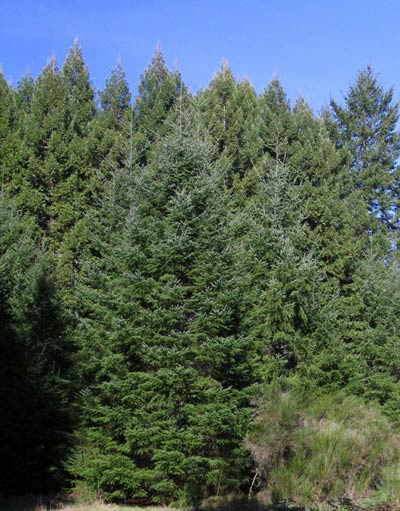
Redwood & Doug fir forest on Artesa’s property in Annapolis
Fragile fisheries
Another part of Artesa’s complaint is that newspaper articles state that “…development of our Annapolis property would interfere with fragile fisheries.”
This part of Artesa’s complaint is true – many of the articles do suggest that their development would interfere with fragile fisheries, and we agree. Salmonids (coho & chinook salmon and steelhead trout) are endangered and threatened throughout the Pacific Northwest, due in large part to the devastating long-term impacts of clear-cut logging.
 Battered by a long history of habitat loss, logging and development, a dwindling number of coho struggle to survive in the rivers and streams where they return every year to spawn. Now they must contend with water-hungry vines… Battered by a long history of habitat loss, logging and development, a dwindling number of coho struggle to survive in the rivers and streams where they return every year to spawn. Now they must contend with water-hungry vines…  “There are a lot more grape vineyards than there really is water for,” said Brian Cluer, a scientist with the National Marine Fisheries Service. “There are a lot more grape vineyards than there really is water for,” said Brian Cluer, a scientist with the National Marine Fisheries Service.
Water Use by Vineyards Is Challenged – NY Times |
Chinook are extinct in the Gualala, coho are seen so rarely that they are on the verge on extinction, and steelhead are in trouble. Scientific studies has shown that fine sediment from clear-cuts are one of the greatest dangers to the survival of salmonids.
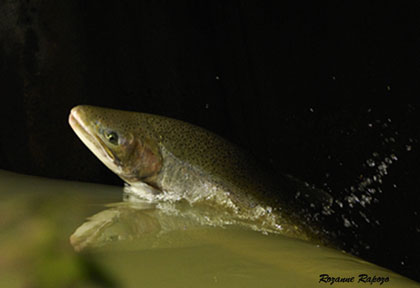
The Gualala River is officially listed as impaired by high temperature and excess sediment under the federal Clean Water Act. California forestry law prohibits any additional harm to an impaired river.
Clear-cutting redwood forest to plant vineyards would reduce the ability of the land to hold and gradually release water, which would increase summer water temperature, and would also reduce the ability of the land to hold the soil, which would increase sediment. For both of these reasons, Artesa’s project would interfere with fragile fisheries, and is therefore illegal.
  “I don’t see a need for more deforestation to have a great wine economy, because there is a lot of cleared land already available.” – Adina Merelender, UC Berkeley conservation biologist, quoted in Redwoods versus red wine – LA Times “I don’t see a need for more deforestation to have a great wine economy, because there is a lot of cleared land already available.” – Adina Merelender, UC Berkeley conservation biologist, quoted in Redwoods versus red wine – LA Times |
Anti-immigrant and anti-Spanish?
Elsewhere on their new website, Artesa Sonoma says,
“…a small and rather controversial group, ‘The Friends of Gualala River’, is taking an anti-immigrant, anti-Spanish stand against the vineyard, even though Artesa and Codorniu Group, based in Spain, have gone out of their way to preserve and protect the entire property.”
Artesa seems to think that our objection to a foreign corporation on the other side of the globe permanently clear-cutting some of the remaining coastal redwood forests so that it can have coastal pinot noir to sell somehow makes us “anti-immigrant and anti-Spanish.”
Please note that 92,000 people from California, the USA and around the world have signed a petition denouncing this project (“Stop Wineries from Destroying CA Redwoods and Native American Heritage”). In addition, over 37,000 have signed a petition – on a website in Spain and in Spanish – speaking out against this proposal (Pídele a Codorníu que no destruya los bosques para producir sus vinos”).
We can only hope that this impressive outcry on the project would sensitize a distant corporation to the destructive effects on the environmental and cultural heritage resources that this project brings to the forests of California thousands of miles away.
The mission of Friends of the Gualala River is focused on the ecological integrity of the Gualala River and its watershed, but we have learned that the deep, ancient cultural resources of this watershed are inextricably linked to its ecology. Protecting the flows, fish, forests, and wildlife of the watershed cannot be separated from the people who lived with and shaped the watershed for millennia.
Tribal organizations most affected by the loss of Pomo and Miwok cultural heritage resources due to this plan will soon release resolutions opposing Artesa’s project.
 “This is OUR land; a blessed and sacred forest and no one can take that from us. The spirits of our ancestors are upon us in this forest because the place is alive. “This is OUR land; a blessed and sacred forest and no one can take that from us. The spirits of our ancestors are upon us in this forest because the place is alive.  How can anyone put the value of a bottle of wine above the value of my people?” How can anyone put the value of a bottle of wine above the value of my people?”
– Kashia Pomo youth, quoted in the February 24, 2012 issue of the Independent Coast Observer |
For additional information, see:
Artesa Sonoma forest-to-vineyard conversion
 CAL FIRE has approved the Environmental Impact Report (EIR) for Artesa Winery’s controversial plan to clear-cut 154 acres of coastal redwood forest to plant a vineyard in Annapolis. The EIR claims that the project will have no significant environmental or cultural impacts.
CAL FIRE has approved the Environmental Impact Report (EIR) for Artesa Winery’s controversial plan to clear-cut 154 acres of coastal redwood forest to plant a vineyard in Annapolis. The EIR claims that the project will have no significant environmental or cultural impacts.
 Friends of Gualala River Protecting the Gualala River watershed and the species living within it
Friends of Gualala River Protecting the Gualala River watershed and the species living within it
